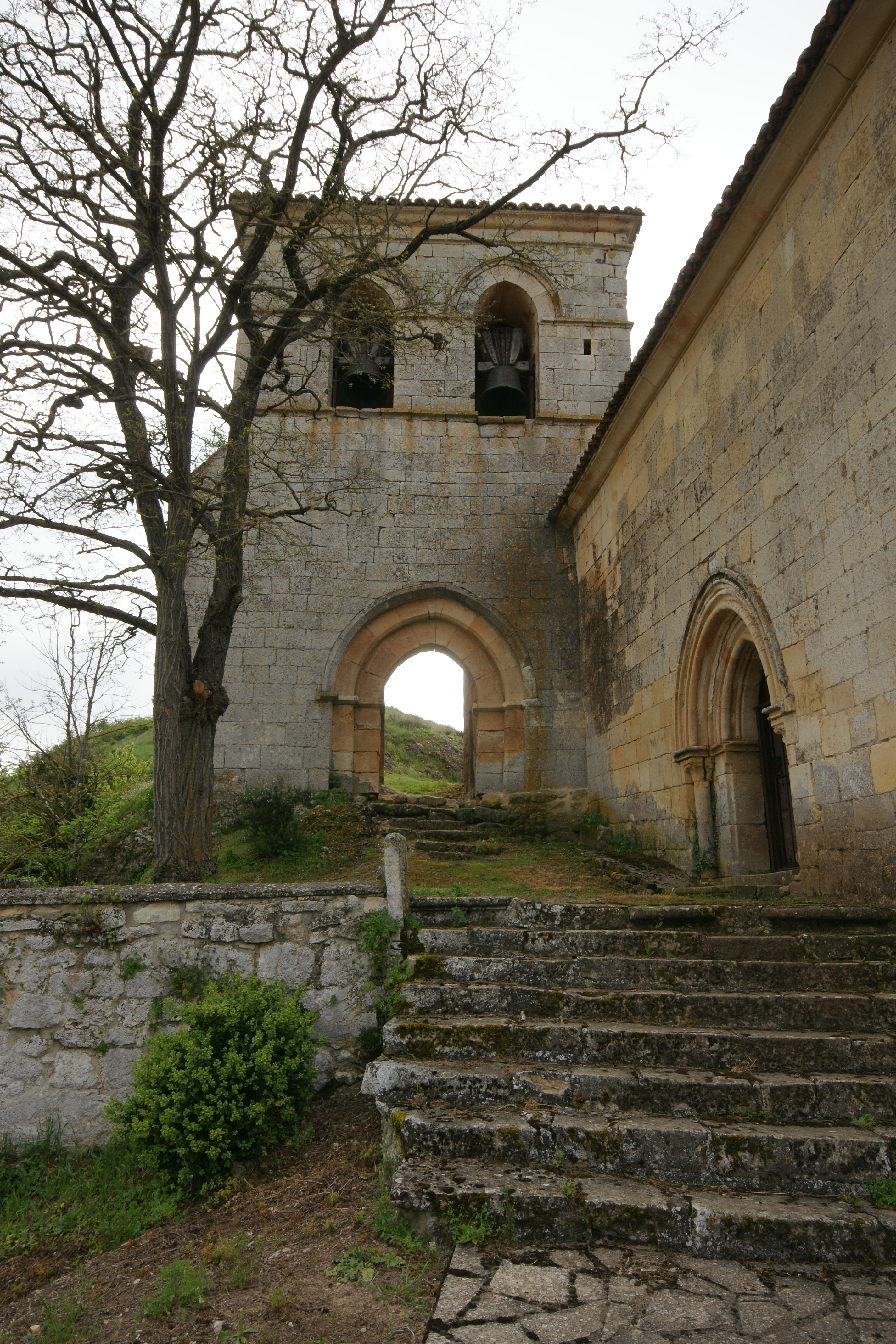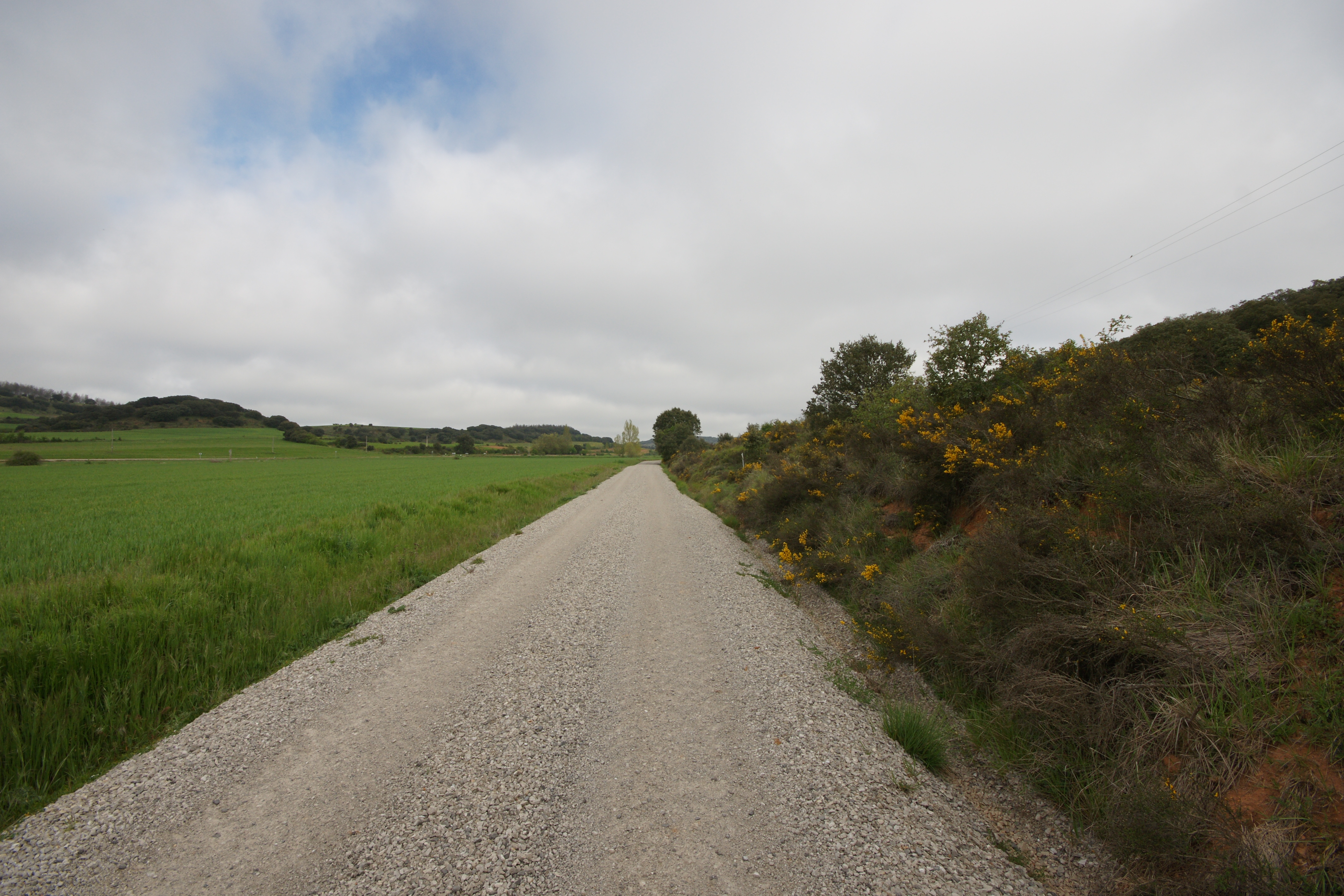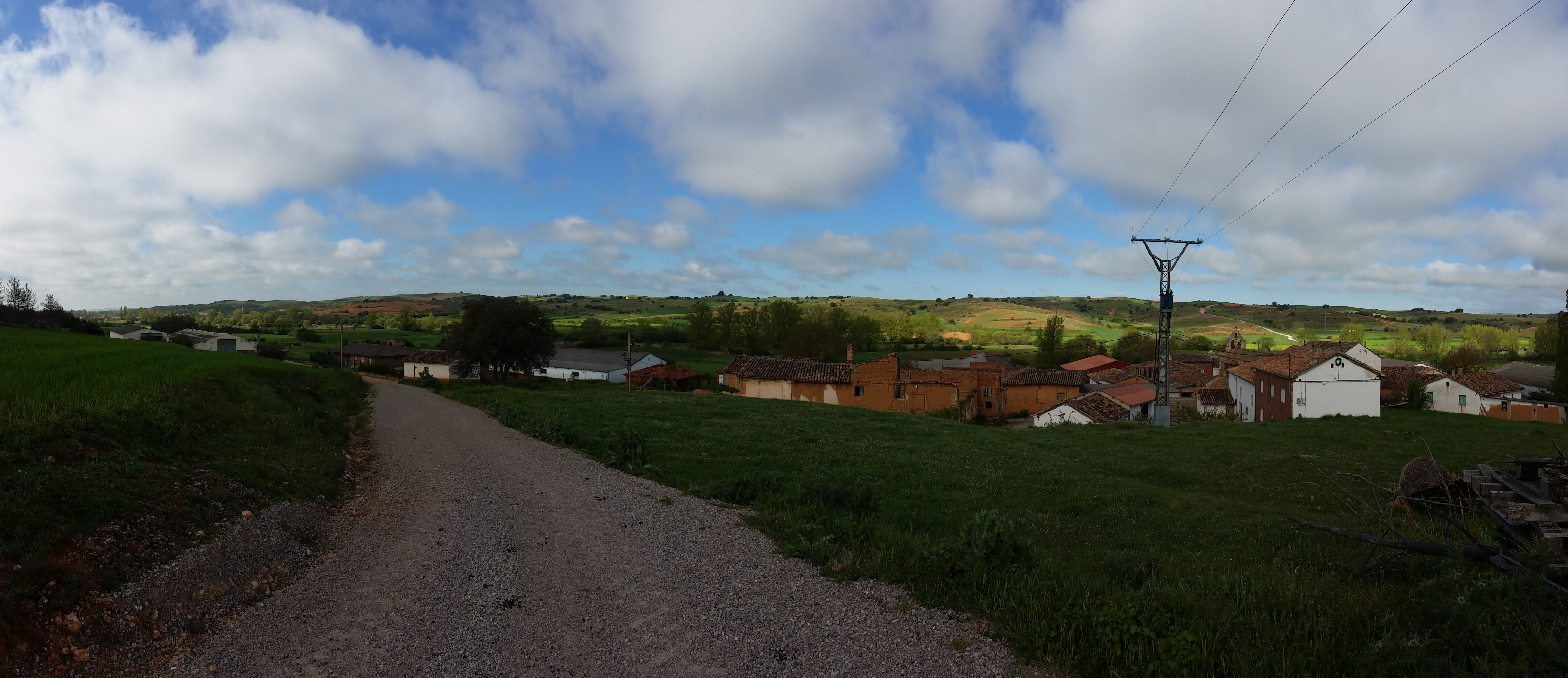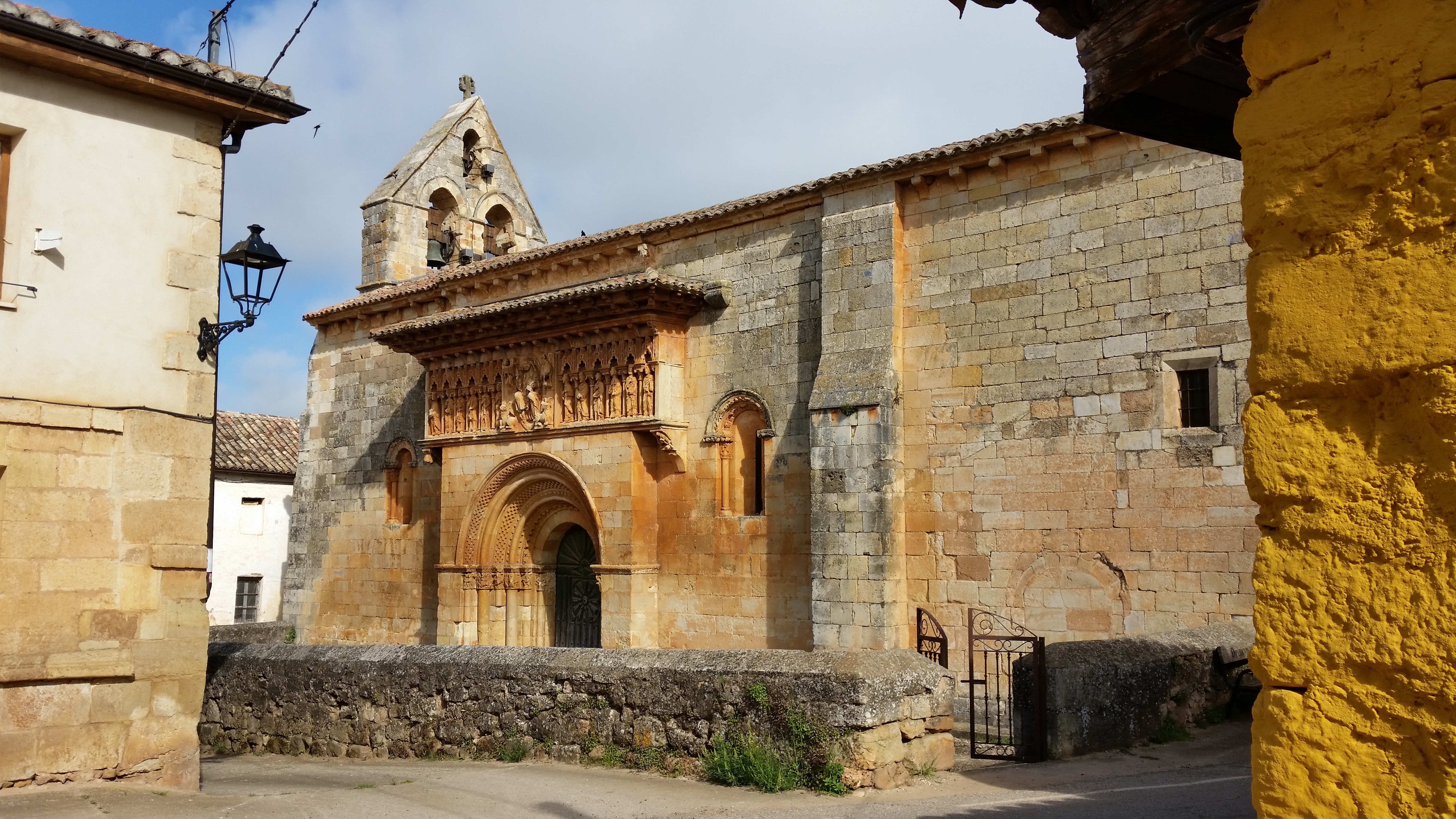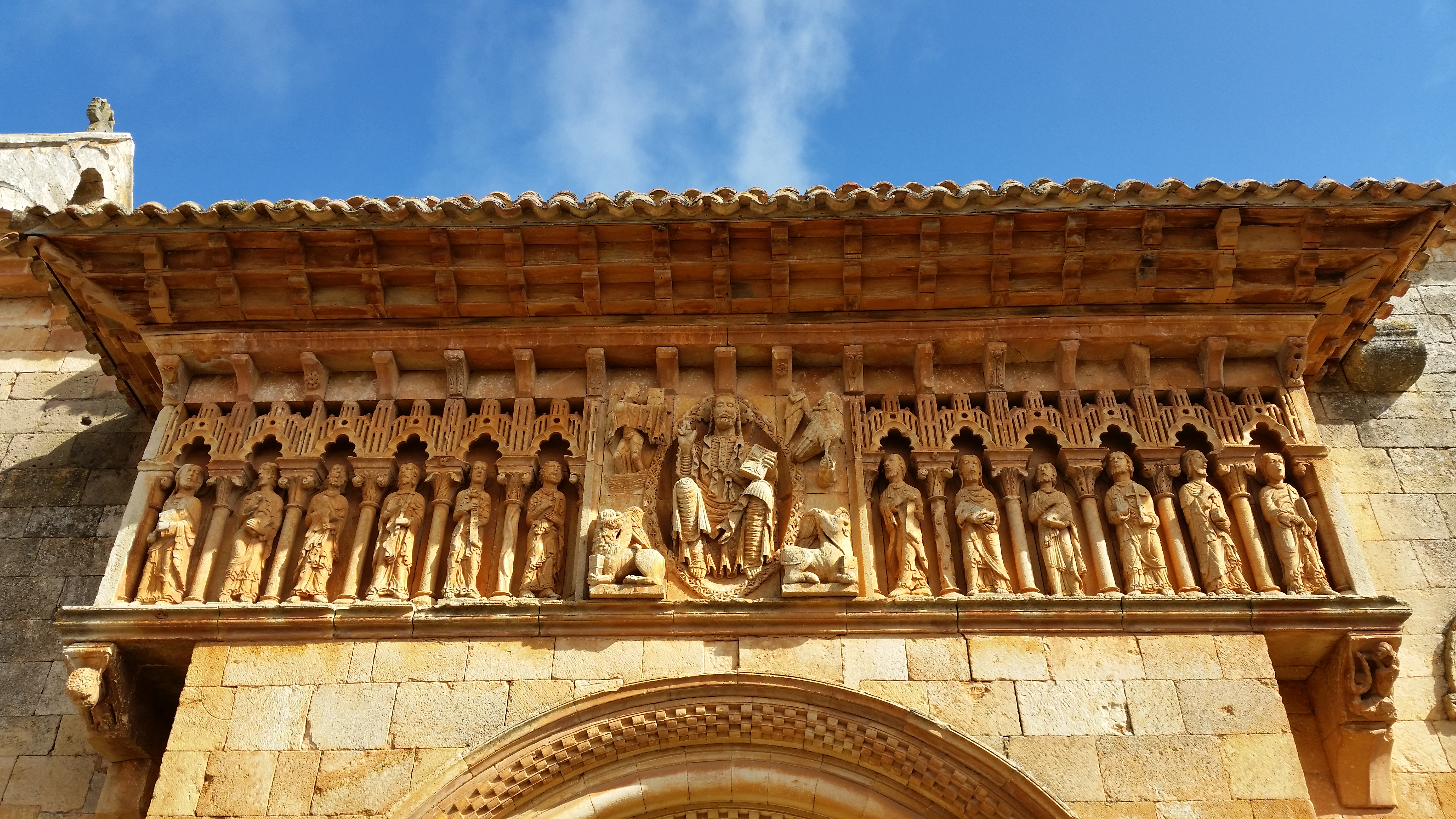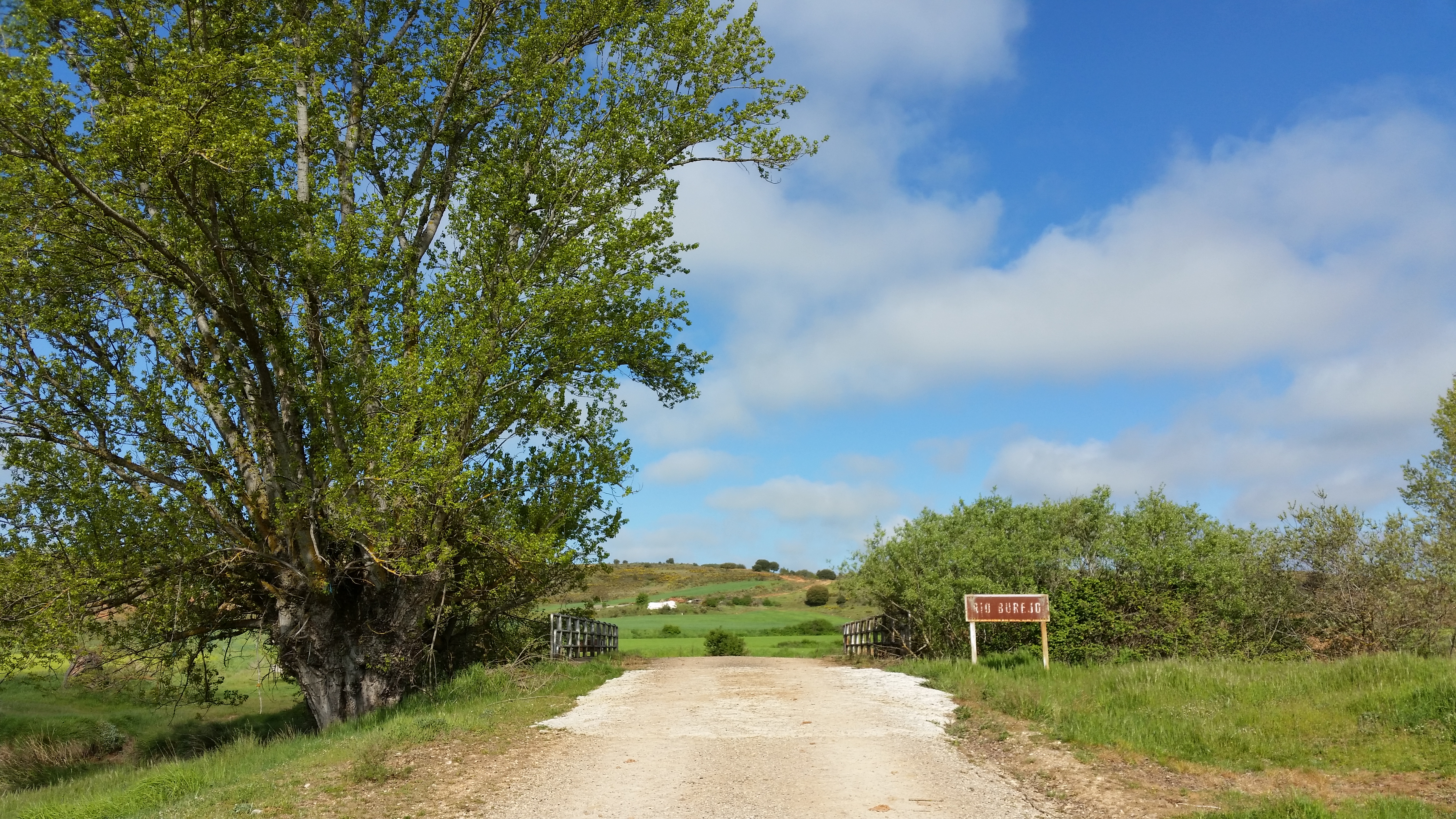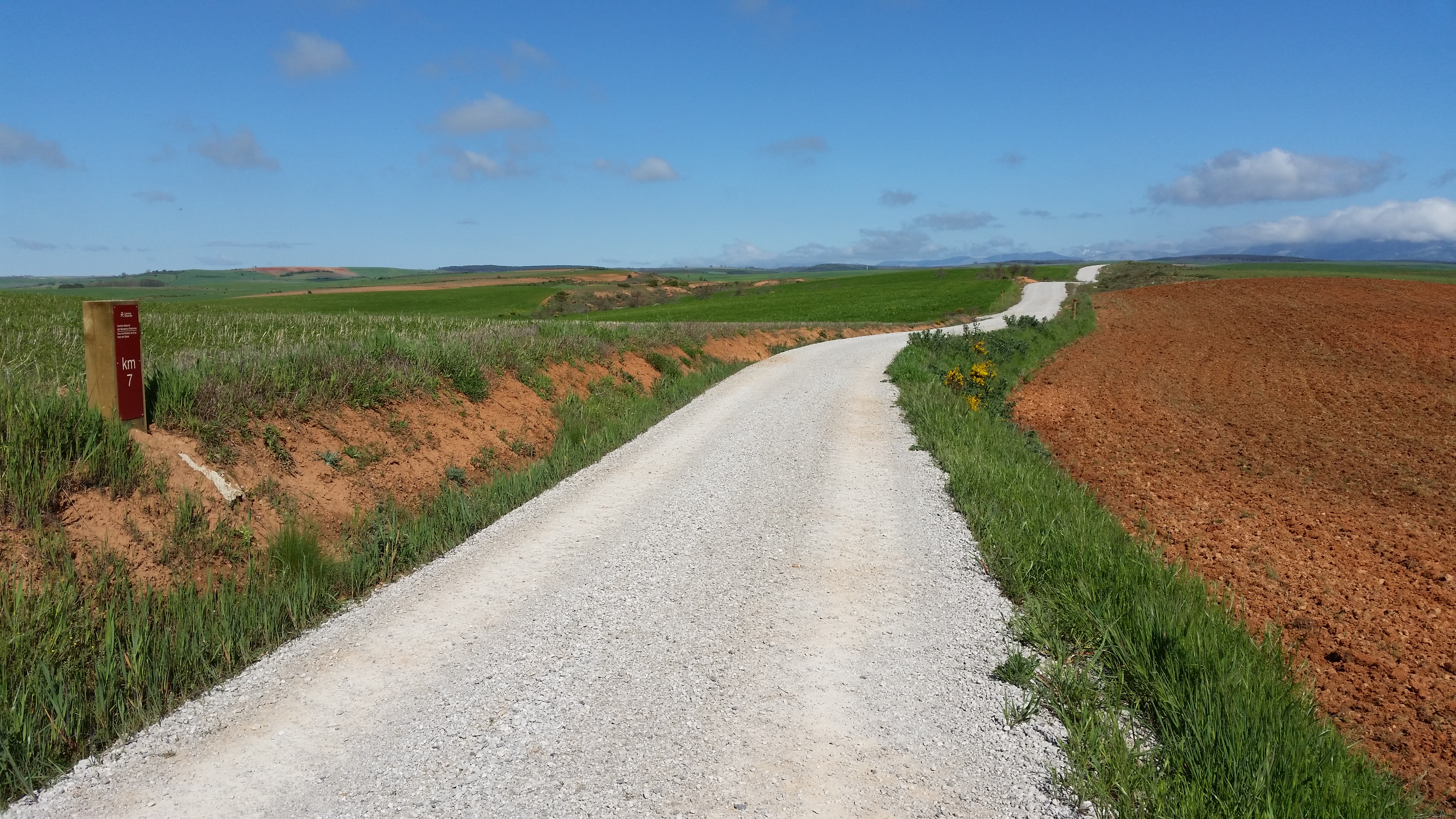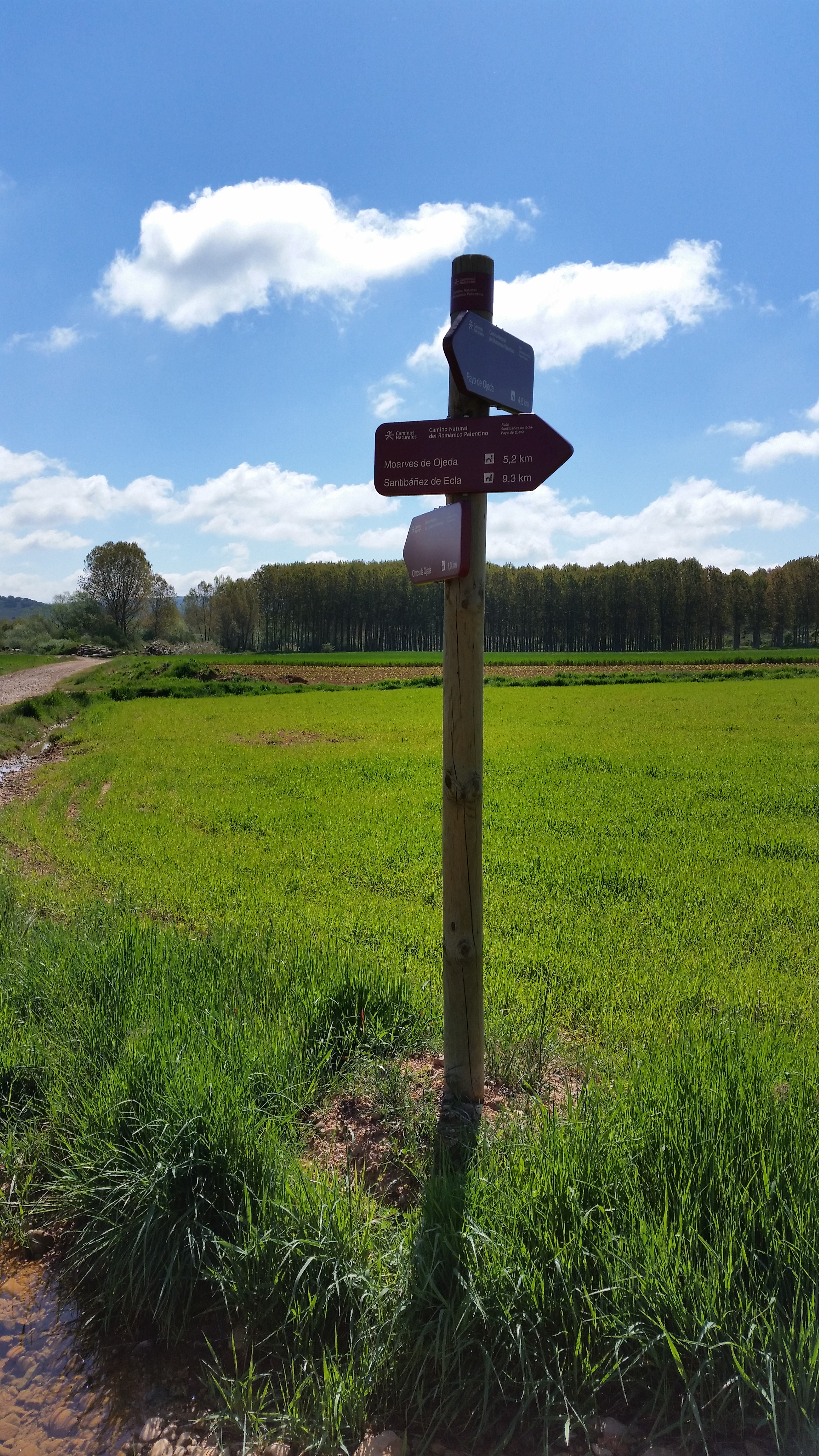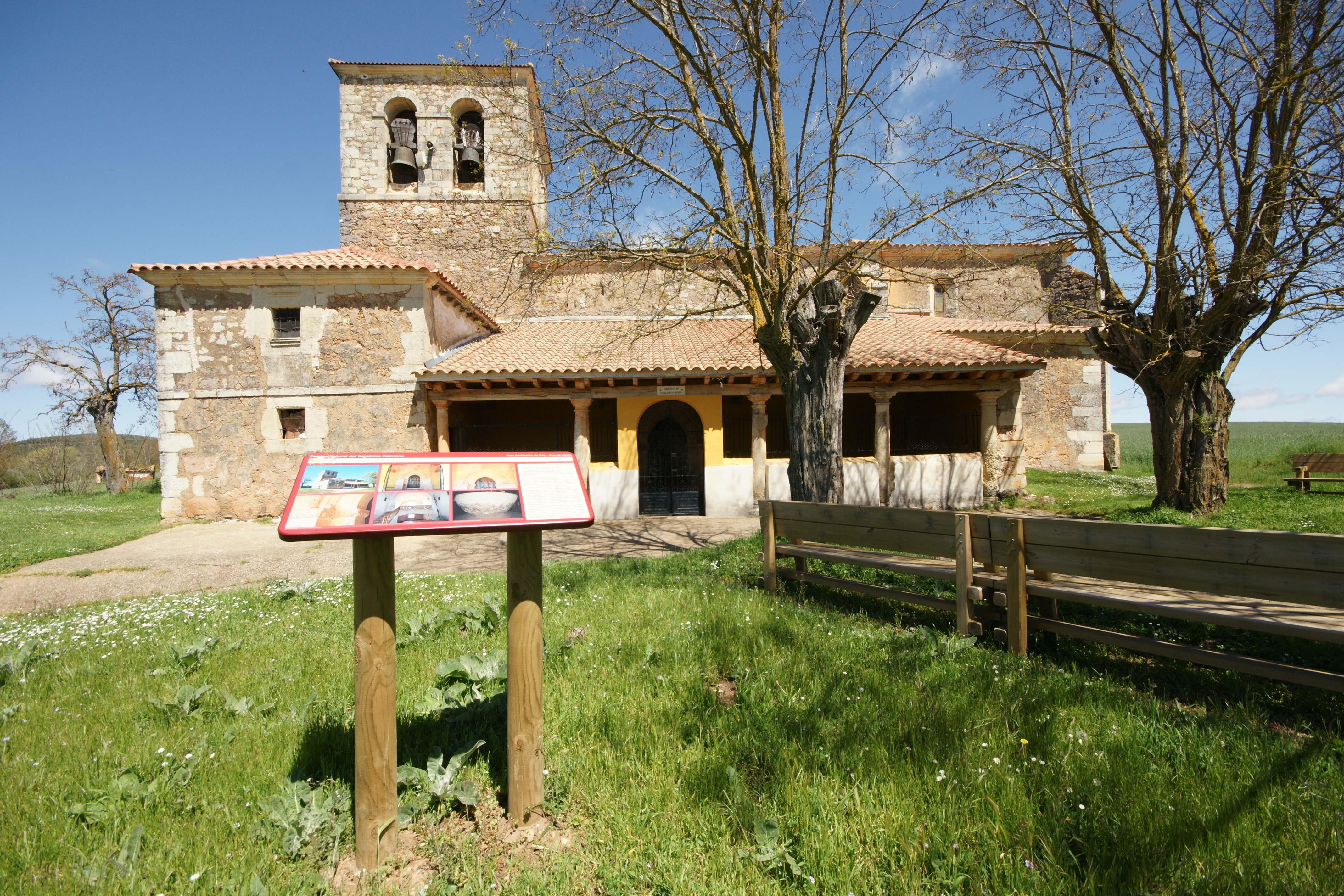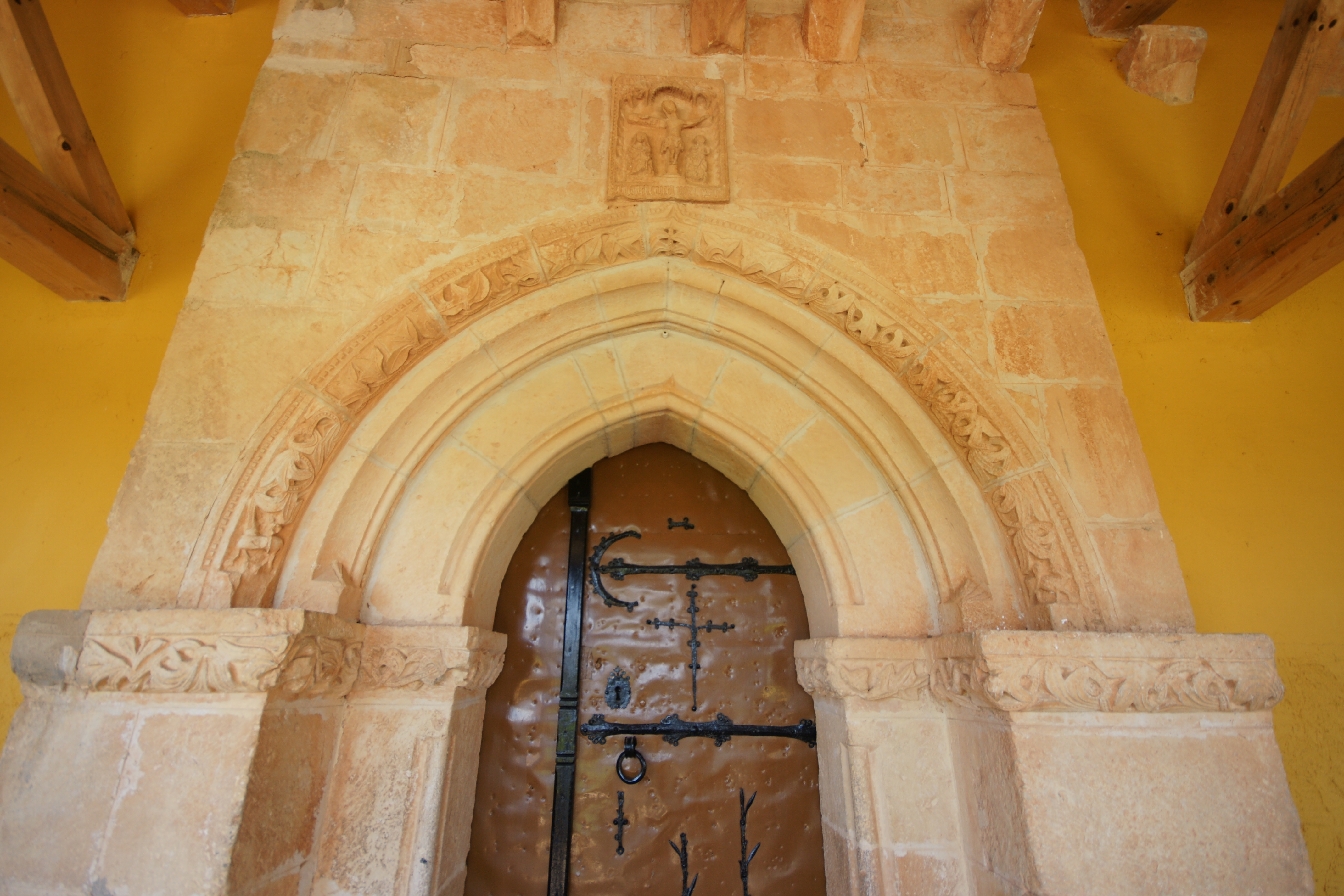- Home
- Rural Development
- Nature Trails
- Nature Trails
- Northwest Sector
- Románico palentino
Alternative 1: Santibáñez de Ecla to Payo de Ojeda route
Description

Romanesque monasteries between farmlands
This 14-kilometre route is one of the two routes complementing the Coke Coal Route, within the Palentinian Romanesque Nature Trail. It goes through the uneven terrain of La Ojeda, among landscapes shaped by the river Burejo, surrounded by crops, oaks and pines. Beautiful examples of Spanish and European Romanesque are hidden in this region, such as the monasteries of San Andreas and Santa Eufemia.
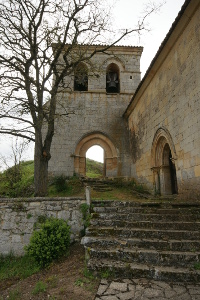
This stage begins in the town of Santibáñez de Ecla, at the intersection between Camino de Escuelas and Real Street, next to the panel marking the start of the route. The trail goes down Real Street and through the town, leaving the church of San Juan on the left. Dating back to the 14th century, this church is a perfect example of the survival of the Romanesque style during the Gothic period in Palencia. Then, the trail reaches the PP-2226 road. From this point, the traveller must be cautious, since this stretch is shared with motorized traffic for 180 metres.
At the first intersection, the route takes a path appearing on the right and goes along the PP-222 road. This is the closest spot to the stunning Monastery of San Andrés, one of the most popular landmarks of the Palentinian Romanesque, really worth visiting. In order to get to the monastery, the traveller can follow the PP-2226 road up to its intersection with the PP-222 road and then turn left.
The vegetation growing along the San Andrés stream makes it difficult to see the monastery from the road, but a few metres ahead, there is a bridge going over the stream and leading to a street where the information panel is located. From this point, the travellers will get a great view of the monastery, and they will be able to skirt its walls to the right and arrive at its entrance.
Back on the trail, the path continues on even ground parallel to the PP-222 road and to San Andrés stream, flanked by crops, brooms and holm oak forests, until it gets to the PP-2225 road. Before reaching this road, it crosses a small footbridge and turns left at the intersection. The route then goes through a 200-metre stretch shared with vehicles up to the intersection with the PP-222, so the travellers should take extra precautions again.
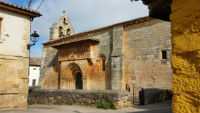
The route crosses the PP-222 road and begins a slight ascent perpendicular to the road. For two and a half kilometres, the trail alternates gravel pavement and dirt paths, running through uneven land with gentle slopes, among crops and oak forests, crossing several forest tracks on its way towards Moarves de Ojeda. As the travellers approach this town, the path begins to go down the slope, and pine and holm oak forests appear.
When the route reaches Moarves, it is easy to see the signs leading to P-277 road, which goes through the middle of the town. The church of San Juan Bautista is near the road – a late Romanesque church declared Historical and Artistic Heritage in 1931. Its façade is crowned by a stunning frieze, with the twelve apostles flanking Christ and surrounded by the symbols of the four evangelists: the man (Mathew), the lion (Mark), the ox (Luke) and the eagle (John).
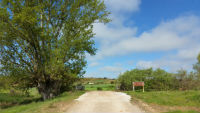
Going around the church, the trail leaves Moarves through the opposite side, heading west. The Burejo river, the main river in the region, is about 250 metres away. After crossing it, the trail starts going up and follows a semi-circular route to the right. For over three kilometres, the route goes through even paths with gravel pavement, mainly flanked by cereal crops. After kilometre number 7, the gravel path ends in a dirt track at a well-indicated intersection. The route continues turning right and going slightly down for two kilometres and a half, leading to Olmos de Ojeda.
One kilometre before reaching Olmos the Ojeda, an intersection appears that allows the traveller to go to Payo de Ojeda or to continue towards the town and visit the town centre or the Monastery of Santa Eufemia (about 2 km away).
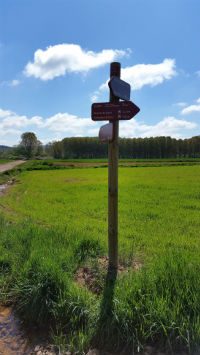
The nature trail continues running among crops towards Payo de Ojeda for three kilometres, reaching an intersection where it goes right. Besides cereal crops, there is also a small area with reforested pines in this stretch of the route.
Finally, the path turns left at an intersection in order to follow the last, straight stretch towards Payo de Ojeda. About 500 metres ahead, the trail crosses the PP-2233 road and then goes straight to the church of Santas Justa and Rufina, with a Romanesque façade and baptismal font.
Profile
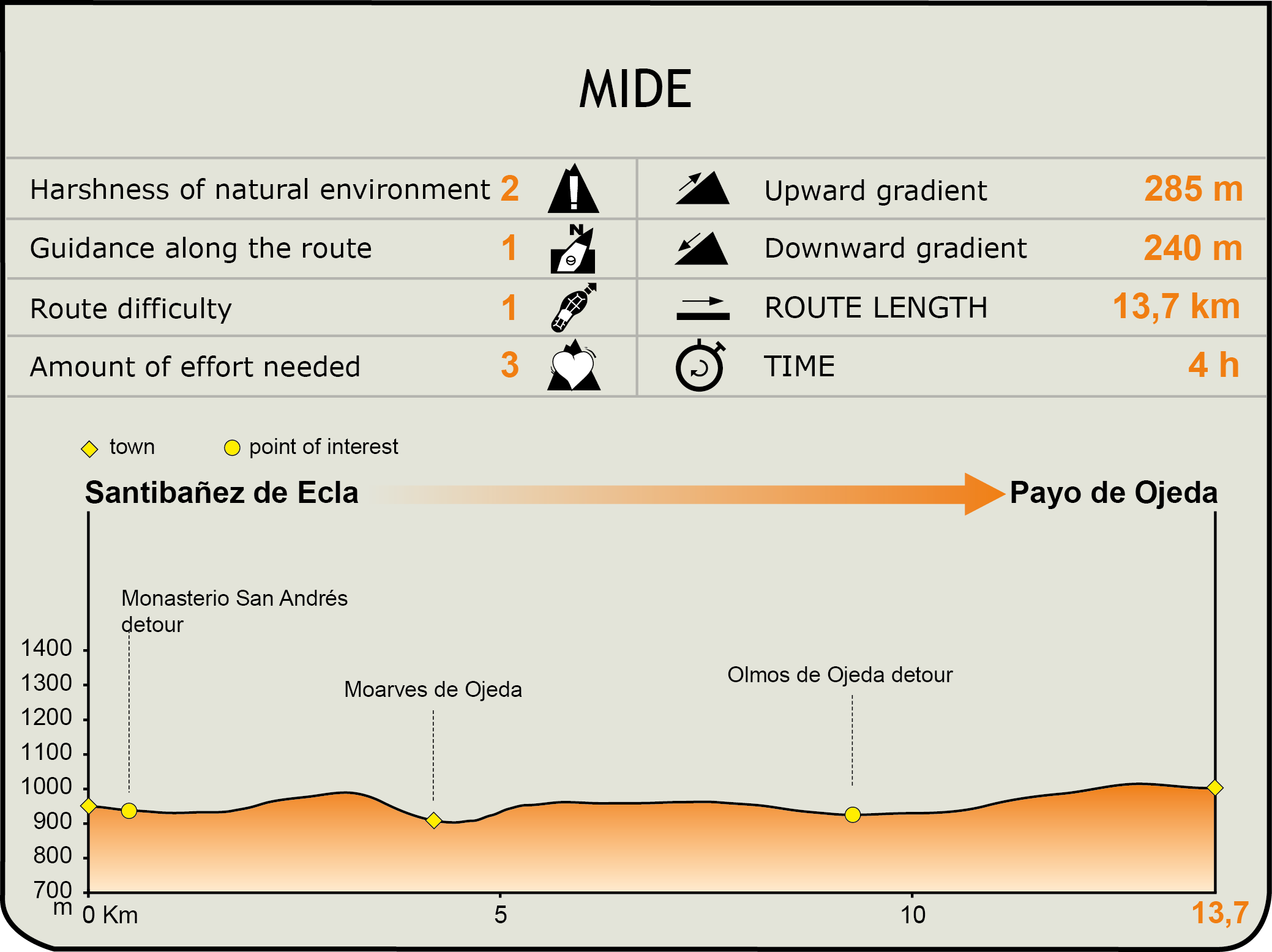
MIDE (Method for the Information of Excursions)
Featured

Further information
Santa María and San Andrés de Arroyo Royal Cistercian Abbey
Commonly known as the monastery of San Andrés de Arroyo, this abbey is an exquisite example of the Cistercian rural art and one of the most popular monuments of the Palentinian Romanesque. It was founded in 1181 to host a community of Cistercian cloistered nuns, and the first written references about it appear in a privilege-granting document by Alfonso VIII of Castile, who continued increasing the heritage of the monastery with numerous donations.
As it is usual in Medieval monasteries, the church and cloister are surrounded by a wall with a large gate. At the entrance, a pillory with a simple design, reminiscent of the civil and criminal jurisdiction of the abbess of San Andrés over various towns of the area, is preserved.
The cloister is the most stunning area in the monastery, and one of the wonders of Hispanic Medieval art. The Chapter House is the most remarkable of the cloistered rooms. The former abbesses Ms. Mencía and Ms. María are buried in it.
The church has a single nave with a transept and three apses with large windows. The main entrance is located on one side, as it was usual in female monasteries, and it has an arcade on one side that goes along the north wall, made up of a series of round arches.
The confiscations of the 19th century affected the preservation of the monastery, but the ensemble was declared a Site of Cultural Interest in 1931, which lead to important restoration works. Today, the cloistered nuns inhabiting the monastery make tea cookies, pastries and other confectionery products that visitors can buy. The monastery also offers a mixed guest accommodation service with very limited spaces.
Santa Eufemia
The Romanesque church of Santa Eufemia (historical-artistic monument since 1931) is the only vestige of what once was the monastery of Freiras Comendadoras de Santiago, and it is one of the most important enclaves of the Spanish Romanesque. The current building dates back to the 12th century, but it has pre-Romanesque origins. The property of this building, which is private, is not related to the confiscations. It was traded by the Comendadoras, which gave up the monastery in exchange for land in Toledo.
The church, which has a Latin cross plan with only one nave, is full of details, such as the rich decoration of its columns and capitals, or the main altar, formed by a huge flat stone supported by capitals, which were part of the missing cloister. The church also has two stone sepulchres: the first one, with lilies and lions carved in stone and crowned by the sword, belongs to the Infanta Ms. Sancha Alfonso; the other one belongs to a crusader.
The church also holds a small museum, attached to the north wall, with a collection of the remains of the missing cloister.
